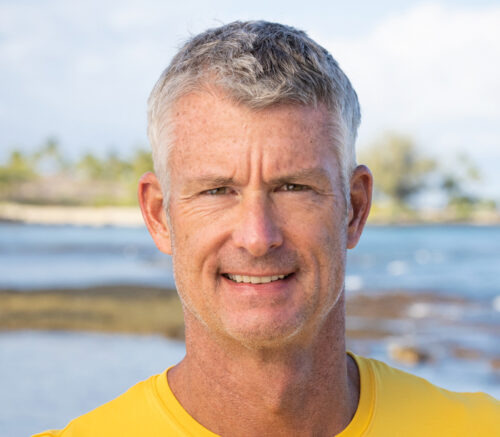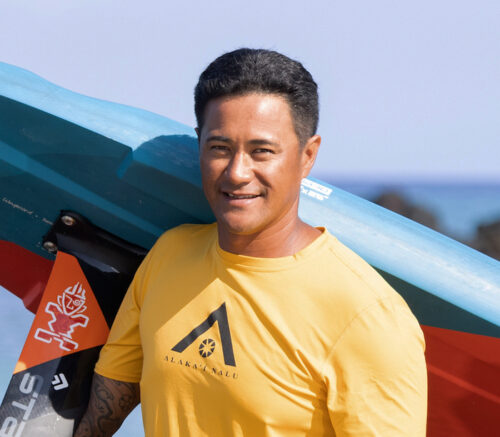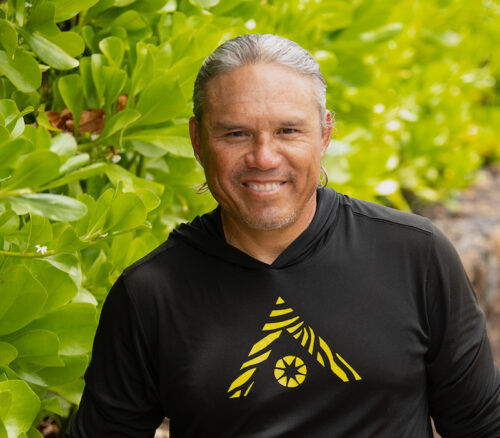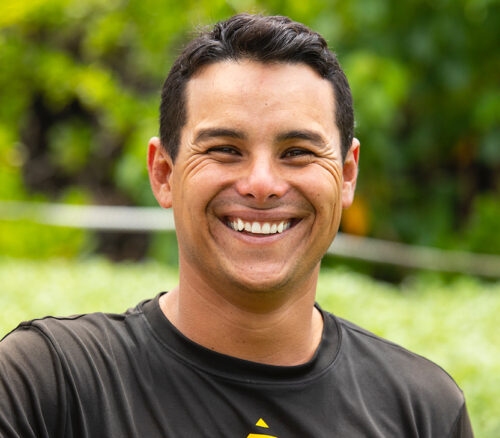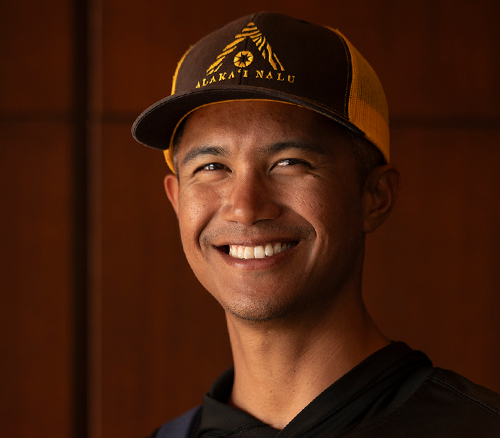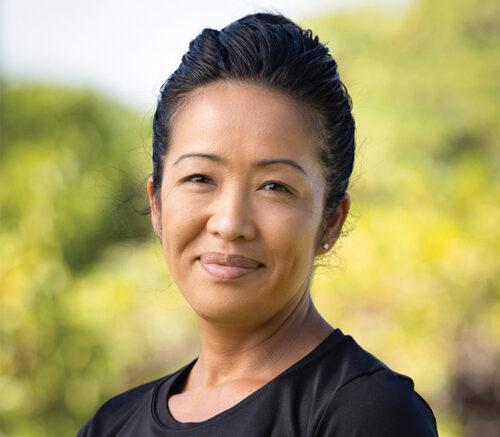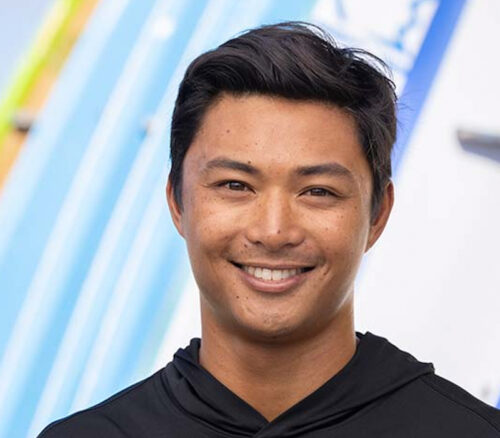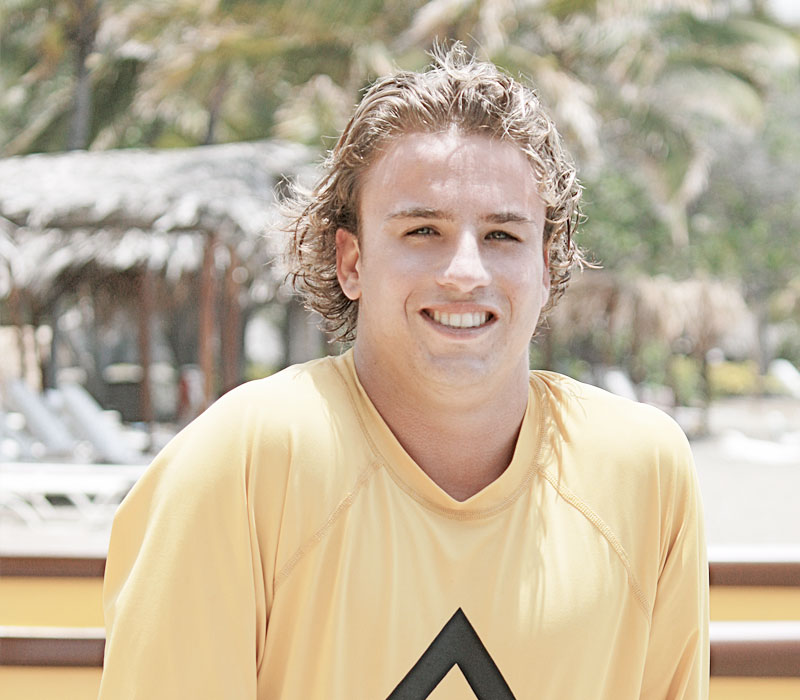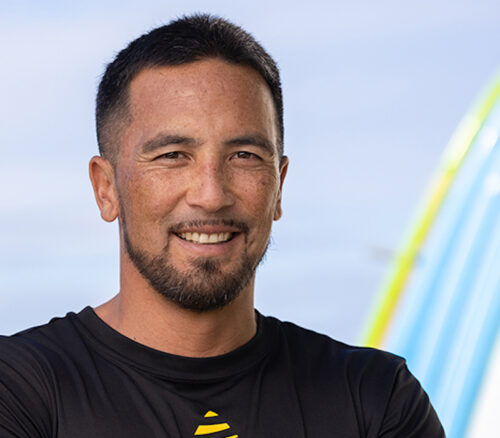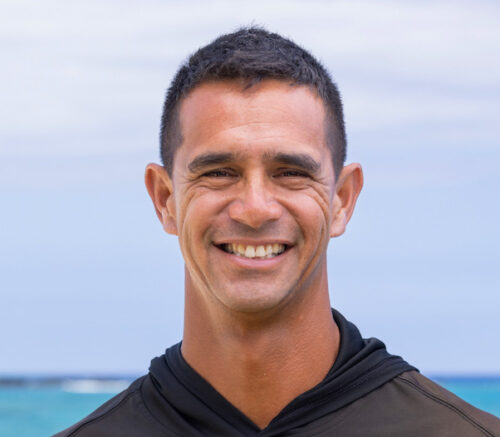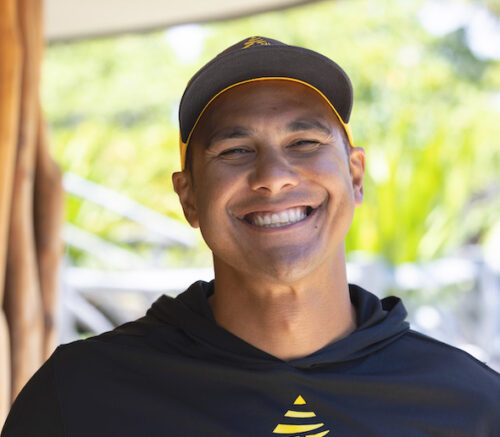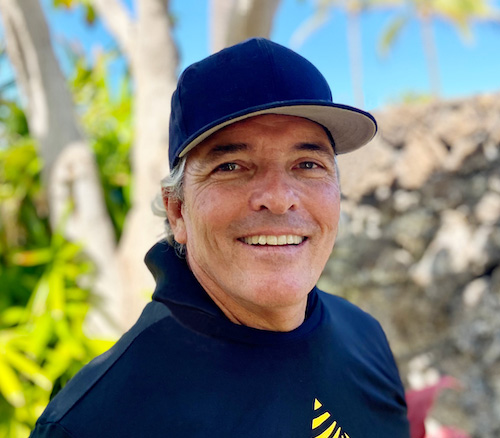HISTORY OF THE ALAKAʻI NALU
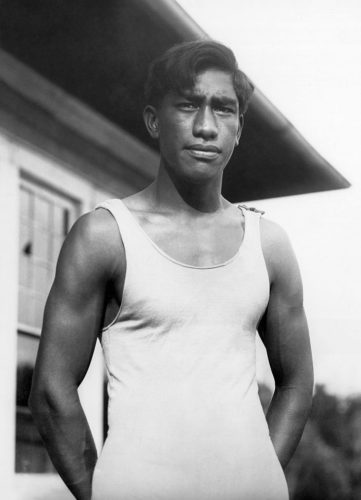
Duke Kahanamoku c. 1912
Duke Paoa Kahanamoku took the character of the Hawaiian waterman around the world. Spiritually and physically he was strong, but also very gentle. A champion, fearless in the water and on land. This is the inspiration of the Alakaʻi Nalu.
The Alakaʻi Nalu are respected masters of the ocean. They are some of the top watermen and women in the State well versed in the rich traditions of Hawaiʻi and imbued with a sense of stewardship for the ocean. They serve as ocean ambassadors to residents and guests.
Overseeing water safety and ocean awareness, the Alakaʻi Nalu post ocean conditions for our guests and residents along the shoreline. They are also available to assist with water sports equipment, private instruction and advice on how best to interact with the beautiful yet unpredictable ocean.
The warm blue ocean waters and sandy beaches are alluring attractions for guests at Hualālai Resort and Four Seasons Resort Hualālai. The beauty can be deceiving so learning about the ocean conditions are a priority in their daily schedule. To help resort guests interact with the powerful force of the ocean and the topography of the coast, the Alakaʻi Nalu (leader of the waves) program hearkens back to the Hawaiʻi of the ’30s and ’40s, when beach boys were respected, fun-loving stewards of the ocean. They provide numerous options for water sports and unique leisure activities.
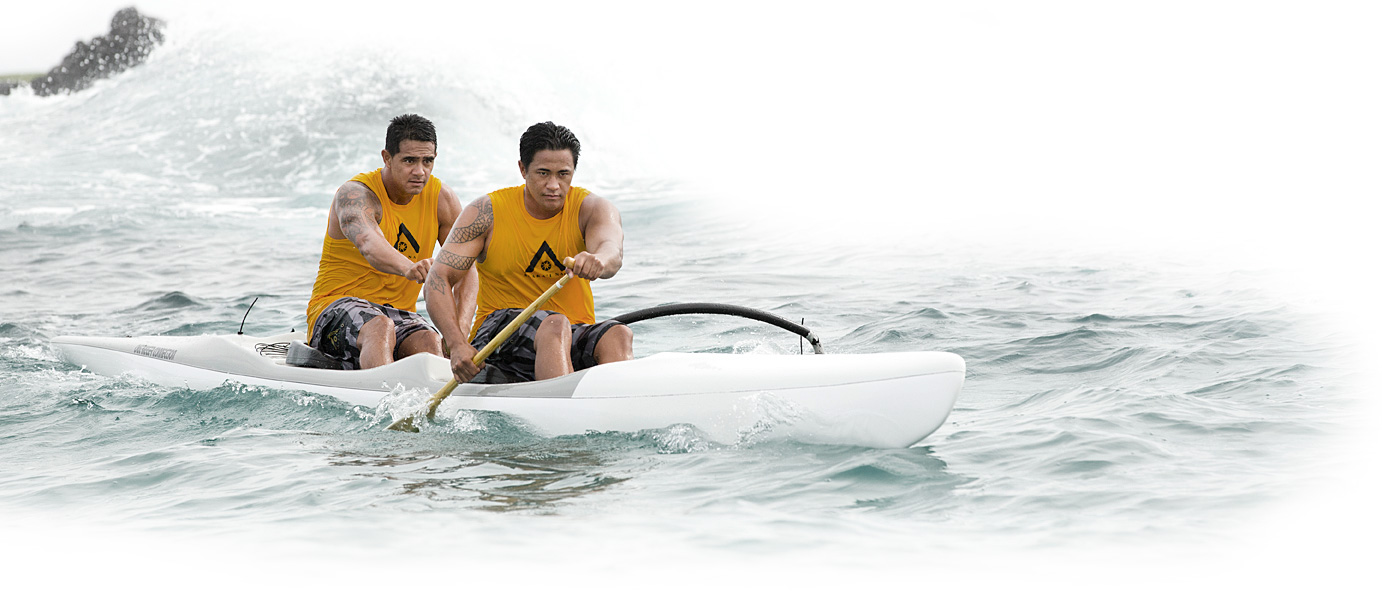
MEET THE ALAKA‘I NALU
HISTORY OF THE HAWAIIAN LANGUAGE
In ancient times, the culture and traditions of the people of Hawaiʻi were transmitted orally from generation to generation. American missionaries arrived in 1820 and soon formulated a written Hawaiian language based on the sounds they heard. Hawaiians quickly adopted written literacy following the introduction of printed Bibles, grammars and other textbooks. Hawaiian was the primary language of all islanders until the late 19th century. In 1893, the last reigning Hawaiian monarch, Queen Liliʻuokalani, was overthrown by American forces. Soon thereafter, Hawaiian was banned as the language of instruction in all schools. That prohibition was finally officially lifted in 1986. Today, the State of Hawaiʻi has two official languages, Hawaiian and English, established by the State Constitution of 1978.
In its written form, the language uses an alphabet of 13 letters: five vowels (a, e, i, o, u) and eight consonants (h, k, l, m, n, p, w) including the ʻokina or glottal stop. The “sound” of the ʻokina is similar to the vocal break made when pronouncing “oh-oh.” Omission of the ʻokina, as with the omission of any other letter, changes the meaning of the word. The kahakō, or macron, is a diacritical mark employed primarily as an aid to proper pronunciation; it indicates a stressed and elongated vowel.
Click an individual Hawaiian word below to have Uncle Earl guide you through the correct pronunciation and meaning of the word in a short video.
Alakaʻi Nalu – Leaders of the Waves.
ʻAkaka Falls – One of many water falls on the east side of this island.
Aliʻi – Chief or anyone that is of royalty.
E komo mai – To come in or welcome.
Hala – Type of tree which dried leaves where used to weave mats to sit and lay on. It was also used to weave the sails for the canoes.
Hale Kula – A place for learning (school.)
Hale Nalu – Home of the Alakaʻi Nalu.
Hau ʻoli – Means to be happy.
Hāwī – It’s the name of the main town in Kohala.
Heiau – Is a temple.
Hoʻokipa – Host or hospitality.
Hōkūleʻa – Is the name of the first long voyaging canoe built in the 20th century here in Hawaiʻi. It also means Star of Gladness.
Hōlualoa – A tiny artsy town above Kailua-Kona town on the old Mamālahoa Highway.
Hōnaunau – Place name in south Kona.
Honu – Turtle
Hualālai – The name of one of five major volcanoes that created this Island of Hawaiʻi. It’s also the name of the wife of master navigator Hawaiʻi Loa.
Hulali – Means to sparkle or shine.
Kahiko – The time of the ancient ones.
Kahuwai – The name of the bay that is located north of Pahu iʻa restaurant fronting Kona Village.
Kālā Paʻa – Currency.
Kāne – A male in Hawaiian.
Kapu – Taboo.
Kaʻūpūlehu – Roasted Breadfruit, also the name of this ahupuaʻa (land division.)
Keiki – A child or children.
Kīholo – Kīholo Bay is located 10 minutes north of the resort.
Kukui – The candle nut tree.
Kupuna – An Elder
Lapakahi – A state park on the Kohala coast.
Lau – Leaves off of a plant.
Lino Hau – Perfection.
Lomi Lomi – To massage.
Mahuaola – To increase the value of life.
Makai – Directional, meaning towards the sea.
Makaliʻi – Name of the long voyaging canoe built in Kamuela here on Hawaiʻi Island. It’s also one of many star consolations Hawaiian navigators old and new use while sailing.
Manini – Is the name of a reef fish that belong to the tang family.
Mauka – Directional, meaning towards the mountain.
Maunakea – White Back Mountain. It’s also considered the tallest mountain in the world from the ocean floor to the summit.
Naupaka – The scientific name is Scaevola Sericea this plant can grow in high and low elevation. You’ll find this plant on the beach walk in the hotel, and through out the resort.
Niu – A coconut
Noni – The name of one of many medicinal plants used by the Hawaiians past and present.
ʻOhe Kapala – The art of stamping using strips of bamboo.
Pahu iʻa – The name of one of the restaurants here on property, it also means aquarium.
Pololū – The name of a valley in Kohala. This is where Kamehameha the Great was raised from when he was an infant to his early teens.
Puʻuhonua – A place of refuge.
Puʻukoholā – Means the hill of the whale. Its located 40 minutes north of the resort.
ʻUkulele – An introduced instrument from Portugal, also means Jumping Flea.
Wahine – A female in Hawaiian.
ABOUT OUR LOGO
Hanau ka uku koʻakoʻa, hanau kana, he ʻakoʻakoʻa puka
The Kumulipo is a Hawaiian genealogical prayer that speaks of life born from the darkness. This creation chant is more than two thousand lines and links the royal family of Hawaiʻi to the primary gods, to the stars in the heavens, and to the plants and animals on earth. This single line describes how the sea urchin gives birth to a baby sea urchin, completing the cycle of life.
This island and the ocean that surrounds us provide us sustenance and life. Symbols from our environment reiterate our dependence and our respect to nature.

HAʻUKEʻUKE (SEA URCHIN)
This motif is a popular decoration on kapa. It is valuable medicinally and as a food source. Its manner of clustering is a metaphor of community. Its use in our environment reminds us of the relationship with the ocean and the inspiration for nurturing each other.

ʻAKOʻAKOʻA KOHE (MUSHROOM CORAL)
The coral is the foundation on which an island grows. It is a social plant, assembled close to each other. The ocean commands strength and bravery. The use of this metaphor represents our valiant people.

HĀLAU WAʻA
The long house for the canoe echoes the foundation of our people. The protective walls include the practices of family and nourishment for the strength needed at sea.
A Cultural Responsibility
The practice of “halau” involves both within the walls of the physical building and the mental exercises in thought – wherever the person might be. The halau designates ʻohana, an extended family that requires protocol, rank, and certain behavior. Especially within the physical space, one is ask to respect the senior members as they are responsible for all activity of the group. An invitation for all members to be present, whether seen or unseen, demands respect in action and thought – full time.
Responsibilities are equal on both land and sea. In this duality, each member is accountable for the activity before entering, during the ocean immersion, and upon exiting. Knowledge of climate and currents, personality and humility, approach and attitude – values of caring for all things.
The responsibility of leadership is guided through knowledge. The practice of sharing this knowledge is two-fold: building strength inward and outward.
Logo Design
The Alakaʻi Nalu design honors ancestral ties in request for their guidance. It recognizes senior lines of families that have set the paths for us to follow. Providing the overall halau concept, each member is respectful in action and thought. Illustrating ocean and land dualities, the motif accounts responsibility. Overall imagery asks for protection and guidance. Alakaʻi Nalu logo designed by Sig Zane and Kuhao Zane.


